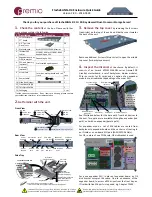Reviews:
No comments
Related manuals for s5800 series

51
Brand: IBM Pages: 248

NWAR33P
Brand: Niveo Pages: 155

FlacheSAN1L-D4
Brand: Premio Pages: 3

VideoJet 100
Brand: VCS Pages: 118

1018RC
Brand: Patton electronics Pages: 12

IPAM-1600s Series
Brand: C-Com Pages: 148

Imagine 920
Brand: HELVAR Pages: 2

Hunter Series
Brand: Galaxy Pages: 30

iMcV-FiberLinX
Brand: IMC Networks Pages: 36

FWS-7150
Brand: Aaeon Pages: 57

NSM4000
Brand: Juniper Pages: 196

GS1100-10HP
Brand: ZyXEL Communications Pages: 30

A 1475
Brand: METREL Pages: 21

FDF13 Series
Brand: JETWAY Pages: 15

3CRWE737A - 11Mbps Airconnect Wireless Lan PC Card...
Brand: 3Com Pages: 6

301269U - Ethernet Disk Mini Home Edition 500 GB Network Attached Storage Hard...
Brand: LaCie Pages: 74

N306-05M
Brand: Tripp Lite Pages: 2

AND-EL6KE1
Brand: Acrosser Technology Pages: 42

















